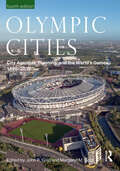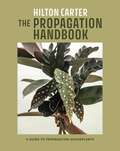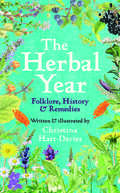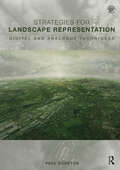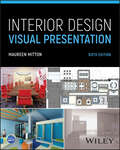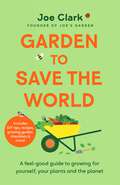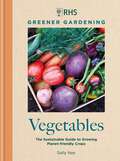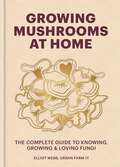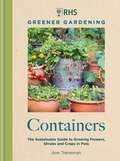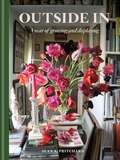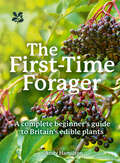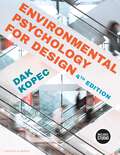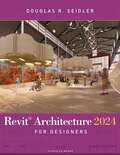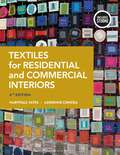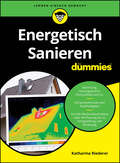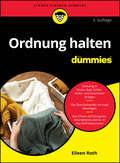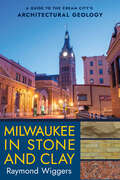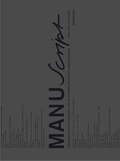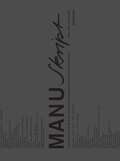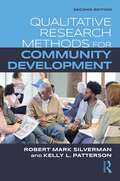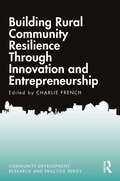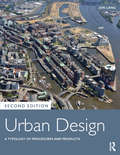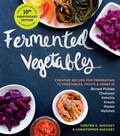- Table View
- List View
Olympic Cities: City Agendas, Planning, and the World’s Games, 1896 – 2032 (ISSN)
by John R. Gold Margaret M. GoldThe first edition of Olympic Cities, published in 2007, provided a pioneering overview of the changing relationship between cities and the modern Olympic Games. This substantially revised and much enlarged fourth edition builds on the success of its predecessors. The first of its three parts provides overviews of the urban legacy of the four component Olympic festivals: the Summer Games; Winter Games; Cultural Olympiads; and the Paralympics. The second part comprises systematic surveys of six key aspects of activity involved in staging the Olympics and Paralympics: finance; sustainability; the creation of Olympic Villages; security; urban regeneration; and tourism. The final part consists of ten chronologically arranged portraits of host cities from 1960 to 2032, with complete coverage of the Summer Games of the twenty-first century.As controversy over the growing size and expense of the Olympics, with associated issues of democratic accountability and legacy, continues unabated, this book’s incisive and timely assessment of the Games’ development and the complex agendas that host cities attach to the event will be essential reading for a wide audience. This will include not just urban and sports historians, urban geographers, event managers, and city planners, but also anyone with an interest in the staging of mega-events and concerned with building a better understanding of the relationship between cities, sport, and culture.
Olympic Cities: City Agendas, Planning, and the World’s Games, 1896 – 2032 (ISSN)
The first edition of Olympic Cities, published in 2007, provided a pioneering overview of the changing relationship between cities and the modern Olympic Games. This substantially revised and much enlarged fourth edition builds on the success of its predecessors. The first of its three parts provides overviews of the urban legacy of the four component Olympic festivals: the Summer Games; Winter Games; Cultural Olympiads; and the Paralympics. The second part comprises systematic surveys of six key aspects of activity involved in staging the Olympics and Paralympics: finance; sustainability; the creation of Olympic Villages; security; urban regeneration; and tourism. The final part consists of ten chronologically arranged portraits of host cities from 1960 to 2032, with complete coverage of the Summer Games of the twenty-first century.As controversy over the growing size and expense of the Olympics, with associated issues of democratic accountability and legacy, continues unabated, this book’s incisive and timely assessment of the Games’ development and the complex agendas that host cities attach to the event will be essential reading for a wide audience. This will include not just urban and sports historians, urban geographers, event managers, and city planners, but also anyone with an interest in the staging of mega-events and concerned with building a better understanding of the relationship between cities, sport, and culture.
The Propagation Handbook: A guide to propagating houseplants
by Hilton CarterIn The Propagation Handbook, plant stylist Hilton Carter reveals how to grow and increase your own plant family by propagating existing plants. Not only a plant lover, Hilton is passionate about propagation, the process of growing a brand new healthy and happy plant from part of an existing one. In this, his fifth book, Hilton talks us through the process of propagating houseplants and explains all the necessary techniques, from the very simplest to more complex methods, such as air layering and grafting. He describes which method to use for different types of plant, and lists essential tools for the process. In Hilton's words: "You hear so much about plant 'parenthood', but knowing how to propagate and then watching as your little plant takes shape and develops into a full-grown plant is the very definition of this."
The Herbal Year: Folklore, History and Remedies
by Christina Hart-DaviesAn enchanting, beautifully illustrated guide to seasonal plants—showing the long history of herbal remedies and their uses today“[A] charming almanac. . . . Hart-Davies, a writer and botanical illustrator whose watercolors enliven her book, . . . offers a lively combination of folk history and modern science; they overlap in intriguing ways.”—Priscilla M. Jensen, Wall Street Journal From sweet violets in spring to rosemary in winter, via marigolds, sage, elderberries, and hops, every season has its own bounty of herbs and plants. Christina Hart-Davies presents a delightful guide to common plants as they appear throughout the year. Drawing on writers, storytellers, and poets from across the centuries, she examines the long history of herbal remedies. She shows how plants have been used for healing and unearths the stories and beliefs that surround them—including simple recipes for use at home. Fully illustrated with exquisitely detailed watercolours, this is an inspirational guide to exploring our age-old relationship with plants. Readers will discover the hidden secrets of the plants that surround us and, through this, will be able to reconnect with our place in nature. We have relied on plants throughout our history. We still do, and, with luck, we always will.
Strategies for Landscape Representation: Digital and Analogue Techniques
by Paul CuretonStrategies for Landscape Representation discusses a variety of digital and analogue production techniques for the representation of landscape at multiple scales. Careful consideration is required to represent time, and to ensure accuracy of representation and evaluation in the landscape.Written as a guide for making appropriate selection of a wide variety of visualisation tools for students and built environment professionals with an interest in landscape, the book charts emerging technologies and historical contexts whilst also being relevant to landscape legislation such as Building Information Modelling (BIM) and Landscape Assessment. This book is an innovation-driven text that encourages readers to make connections between software, technology and analogue modes. The management, choice and combination of such modes can arguably narrow the unknown of landscape character, address the issues of representing time and change in landscape and engage and represent communities’ perceptions and experience of landscape.Showcasing international examples from landscape architecture, planning, urban design and architecture, artists, visualisers, geographers, scientists and model makers, the vitality of making and intrinsic value of representational work in these processes and sites is evidenced. An accompanying companion website provides access to original source files and tutorials totalling over a hundred hours in mapping and GIS, diagrams and notation, photomontage, 3D modelling and 3D printing.
Interior Design Visual Presentation: A Guide To Graphics, Models, And Presentation Techniques
by Maureen MittonINTERIOR DESIGN VISUAL PRESENTATION Comprehensive guide covering all aspects of visual design, including planning, layout, and presentation. Interior Design Visual Presentation comprehensively addresses the visual design and presentation skills of the interior designer, featuring thorough, process-oriented coverage on the planning, layout, and the design of interior building spaces and guiding readers through techniques for executing creative and successful design graphics, models, and presentations. Color illustrations throughout the text feature a wide array of residential, institutional, and commercial settings designed to highlight step-by-step instructions. This newly updated and revised Sixth Edition includes a new overview of the design process for commercial design for students at all levels. Other revisions include new discussion of the impact of digital communication, examples of rendering materials in color, review of the latest tools for digital rendering, additional detail on creating hand drawings, and advanced technologies for physical model making, along with updated 3D modeling tutorials on Sketchup, Revit, Photoshop, and discussion of building information management (BIM) related to design intent and hand and digital rendering. Interior Design Visual Presentation includes information on: The design process and related graphics, covering diagrams and programming analysis graphics, programming matrices, schematic design, and design developmentParaline and perspective drawings, and sketching interior environments using photographs and perspective grid chartsMaterials, media, and tools involved in rendering by hand and constructing physical and digital scale modelsOrganization and composition guidelines when constructing boards, physical presentations, and digital presentationsGraphic design components, public speaking, and design communication when making a complete presentation Covering all aspects of visual design and presentation that interior designers need to know, Interior Design Visual Presentation is a highly accessible and valuable resource for students and professors in primarily first- and second-year courses in interior design degree programs, along with professional interior designers studying for the NCIDQ exam.
Garden To Save The World: A Feel-Good Guide to Growing for Yourself, Your Plants and the Planet
by Joe ClarkNo matter your space, gardening expert and social media sensation Joe Clark will help you find joy and peace in the natural world.Nature enthusiast Joe Clark is here to help you make the most of the outdoors, whether or not you have a garden of your own. Garden to Save the World covers everything from growing your own food and eating seasonally to keeping vital ecosystems alive by encouraging wildlife and appreciating all nature has to offer.Garden to Save the World showcases just how fantastic the natural world is, both for your physical and mental health. It’s a fun, positive guide to the joys of the natural world as a haven for all. The book is complete with practical takeaways on how to make an urban bee hotel, zero waste tips, going wild, using your garden as a supermarket and more. There are fun facts and surprising stories about what your garden can do for you, your community and the planet. Perfect for any budding or seasoned nature lover.- DIY tips on how to make your garden more sustainable- Growing guides so you can grow your favourite vegetables- Advice on how to avoid food waste with tips on how to store, preserve and ferment food- Delicious recipes to try at home- Checklists throughout the book Joe has a brilliant community of nearly 2 million online, where he shares top tips on his Joesgarden platforms.
RHS Greener Gardening: The sustainable guide to growing planet-friendly crops
by Sally Nex Royal Horticultural SocietyBuild your vegetable garden on sustainable, eco-friendly foundations from the start with this new guide to growing your own fresh, organic food. Greener Gardening: Vegetables is the perfect handbook for all seasons, helping budding and experienced gardeners alike in their journey towards a greener way of gardening. The book covers:- Setting up a new vegetable garden so it works hard for you and the environment- A wide ranging directory of vegetables organized by harvesting season- Methods for sowing and growing, plus advice on troubleshooting and saving seed- 'Tasks to do' reminders for keeping on top of garden maintenance each season- 'Do It Greener' reminders of quick and easy way to get greener results You will find new ideas on every page to keep your garden productive and sustainable for years to come.
Growing Mushrooms at Home: The Complete Guide to Knowing, Growing and Loving Fungi
by Elliot WebbEverything you need to know to start growing mushrooms at home!Looking for something quick and easy to grow, that doesn't take up much space, and offers numerous health benefits? Then mushrooms are the perfect choice! Growing Mushrooms at Home will take you through all the basics, from key equipment and step-by-step growing guides all the way to how to turn your harvest into teas, coffees and tinctures. These guides can be used for many varieties - including shiitake, lion's mane, wine cap and oyster - and multiple different growing situations, from buckets and bags to outdoor beds and logs.As well as revealing the essential growing know-how, the book explores our long and complex human history with mushrooms and the fascinating ways fungi continues to shape our world. From ancient Aztec rituals and underground tree communication networks to ground-breaking new medicines and organic pesticides, Growing Mushrooms at Home uncovers the weird and wonderful world of mushrooms, and everything they have to offer.
RHS Greener Gardening: the sustainable guide to growing flowers, shurbs and crops in pots
by Ann Treneman Royal Horticultural SocietyThis complete primer on how to make an eco-friendly container garden is dedicated to showing that everyone can have a garden, no matter the size, that can benefit the planet.RHS Greener Gardening: Containers guides you through greener choices when it comes to creating a container garden including materials, design, plant choice and maintenance. A few pots on the patio or a window box can become a dynamic mini eco system. A balcony garden can attract wildlife. With the right plants to choose from, a patio can hold an orchard. It's all a matter of 'thinking green', using recycled materials when possible, being wildlife-friendly, choosing plants that will avoid waste, and gardening sustainably.Featuring an easy-to-follow guide to green techniques as well as a helpful series of plant profiles, this is the perfect handbook for a sustainable container garden. Sections include:- Setting up your container garden- Container gardening techniques: sourcing plants, containers & contents, watering, feeding & troubleshooting- Creating containers: growing in groups, choosing a theme, how to create a map or a plan
Outside In: A Year of Growing & Displaying
by Sean A Pritchard'Inventive, considered, and thoughtful design.' House & GardenIn his debut book, garden designer Sean A Pritchard shows you how to plan a garden so that every month of the year there's something to bring indoors and display in an engaging way. From the cheery joy of early spring daffodils to the velvety richness of late-summer dahlias, the deep glow of golden autumn leaves to the optimism of late-winter catkins, Sean explains how to grow, harvest, and arrange an abundance of nature's treasure - no matter the size of your plot or your level of horticultural experience.
The First-Time Forager: A Complete Beginner's Guide To Britain's Edible Plants (National Trust)
by Andy HamiltonA friendly, honest guide for wary would-be foragers Only plants that are easy to find, easy to identify and tasty Clear photographic guides to the species
Environmental Psychology for Design: - with STUDIO
by Dak KopecHow does a room affect an occupant's behavior and well-being? How does a building influence its residents' health? Environmental Psychology for Design, 4th Edition, explores these questions with an in-depth look at psychosocial responses to the built environment. Awarded the 2006 ASID Joel Polsky Prize, the first edition served as an introduction to the discipline of environmental psychology and inspired readers to embrace its key concepts and incorporate them into their practice. This 4th edition continues to analyze the interaction between environments and human behavior and well-being, while exploring how individual differences related to age, gender, and cultural background impact that interaction. More discussions on logic formation and argumentation and how these ideas pertain to biological, psychological and sociological paradigms of thought have been incorporated. Additionally, chapters have been rearranged to allow for better content flow, and the emphasis will shift from person specific chapters to be place specific (i.e., schools for youth, long-term care facilities, and more). Ethical Consideration and Pandemic Ponderings box features are included throughout. New to this Edition-Chapters have been reorganized to be more location-centric (ie: schools, long-term care facilities, etc)-Ethical Consideration and Pandemic Ponderings box features included for further discussion of timely topics STUDIO Features Include -Study smarter with self-quizzes featuring scored results and personalized study tips -Review concepts with flashcards of terms and definitions Instructor Resources-Instructor's Guide to help integrate the text into your classroom-PowerPoint Slides for every chapter
Revit Architecture 2024 for Designers: - with STUDIO
by Douglas R. SeidlerRevit is rapidly replacing AutoCAD as the digital drawing tool of choice for architects and interior designers. This book aims to help design students master Revit as a tool in the design studio and in practice. Revit Architecture 2024 for Designers is both a thorough primer for new learners and expanded conceptual discussion for design professionals. The progressive introduction of concepts (chapters build on previous chapters), digital exercises, and professional examples make this book easy to follow for learners new to Revit. Packed with visual examples, Revit Architecture 2024 for Designers is written specifically for architecture students and interior design students. It provides a thorough primer for new learners and advanced instruction for designers. What's new to this Edition?· Instruction Graphics updated for Revit Architecture 2024 features and user interface· New instruction on importing AutoCAD files and PDFs (Ch 2); Photorealistic Rendering (Ch 7); and Interior Elevations (Ch 8)· New instructional examples on Advanced Modeling (Ch 9) and Construction Details (Ch 12)
Textiles for Residential and Commercial Interiors: - with STUDIO
by MaryPaul Yates Adrienne ConcraLearn how to choose the right type of textile for your residential and commercial interior design. This book includes important information about fiber and fabrics for household and institutional textiles, and commercial and residential textiles. It also touches on specific design techniques such as the latest textile printing methods and technologies, the newest performance-related finishes, proper window treatment, and the best environmentally conscious sustainability approaches. The line drawings and photographs show yarns, weaving, manufacturing equipment, fibers, fabrics used in a variety of interior spaces, and many more. New to this Edition- Updated to include the newest codes and guidelines for fabric performance and evaluation - Exploration of new textile printing methods and technologies- Updated fire safety methods and flammability testing STUDIO Features Include- Study smarter with self-quizzes featuring scored results and personalized study tips- Review concepts with flashcards of terms and definitions Instructor Resources- Instructor's Guide to help integrate the text into your classroom- PowerPoint slides for every chapter
Energetisch Sanieren für Dummies (Für Dummies)
by Katharina RiedererMachen Sie Ihr Haus zukunftsfit – nachhaltig und energiesparend Wenn Sie Ihr Haus energetisch sanieren möchten, dann liegen Sie mit diesem Buch goldrichtig. Die Autorin begleitet Sie zunächst bei der systematischen Bestandsaufnahme Ihres Hauses. Dabei erhalten Sie wertvolle Informationen und Entscheidungshilfen, die Sie dabei unterstützen, Ihre Sanierungsmaßnahmen zu planen. Sie bekommen Hintergrundinfos und Ausführungstipps zu den einzelnen Maßnahmen, wie beispielsweise zur Sanierung der Gebäudehülle (Stichwort: Dämmung) oder zu technischen Lösungen wie Heizung, Photovoltaik und Co. Damit können Sie Ihr Haus Schritt für Schritt klimafit machen. Sie erfahren Was es mit Energieeffizienz auf sich hat Welche Maßnahmen nötig und welche möglich sind Wie Sie Sonnenenergie nutzen, Heizung, Kühlung und Lüftung planen Wie Sie Ihr Projekt angehen, Vorschriften einhalten und Förderungen erhalten
Ordnung halten für Dummies (Für Dummies)
by Eileen RothDamit Tohuwabohu ein Fremdwort bleibt Haben Sie es satt, ewig Ihren Schlüssel zu suchen und ihn später im Kühlschrank wiederzufinden? Ordnung halten: Dem einen ist es einfach gegeben, die anderen müssen es mühsam lernen. Eileen Roth zeigt Ihnen, wie Sie Ihr Zuhause ordentlich halten und Ihren Arbeitsplatz effizient gestalten. Außerdem erfahren Sie, wie Sie Ihre Daten auf Computer, Smartphone und Co. ordnen und Ihren Urlaub so planen, dass Sie richtig entspannen. Wenn Sie gut organisiert sind, haben Sie weniger Arbeit, weniger Stress, mehr Freizeit und mehr Entspannung. Mithilfe dieses Buches finden Sie immer, was Sie suchen Sie erfahren Welche Hilfsmittel Ihnen beim Ordnen helfen Was Sie aufheben sollten und was nicht Welche grundlegenden Techniken es für das Zeitmanagement gibt Wie Sie das Chaos mit System beseitigen
Milwaukee in Stone and Clay: A Guide to the Cream City's Architectural Geology
by Raymond WiggersMilwaukee in Stone and Clay follows directly in the footsteps of Raymond Wiggers's previous award-winning book, Chicago in Stone and Clay. It offers a wide-ranging look at the fascinating geology found in the building materials of Milwaukee County's architectural landmarks. And it reveals the intriguing and often surprising links between science, art, and engineering. Laid out in two main sections, the book first introduces the reader to the fundamentals of Milwaukee's geology and its amazing prehuman history, then provides a site-by-site tour guide. Written in an engaging, informal style, this work presents the first in-depth exploration of the interplay among the region's most architecturally significant sites, the materials they're made of, and the sediments and bedrock they're anchored in. Raymond Wiggers crafted Milwaukee in Stone and Clay as an informative and exciting overview of this city. His two decades of experience leading architectural-geology tours have demonstrated the popularity of this approach and the subject matter.
Manuscript: Essentials for the Everyday Use of Interior Architects and Designers
by Axel Müller-SchöllThis book provides essential introductory information for designers and interior designers. From the realm of interior design, for example, it deals with ceilings, floors, doors, windows, stairs, etc. – from that of material science, with carpets, wallpaper, wall paint, glass, wood materials, stone, and concrete. It also presents architectural drawing: techniques of representation, descriptive geometry, technical drawing, standard dimensions, signs and symbols, and mathematical foundations; attention is also given to the fundamentals of graphic design, preparing documents for publication, file formats, and color systems. All of this is generously leavened with practical examples; original essays by Ruedi Baur, Axel Kufus, Norbert Rademacher, Martin Kunz, and others; and thought-provoking quotations. If they want to, readers may separate the pages of the Japanese binding – this way they get room to add their personal notes and comments.
Manuskript: Essentials für den Alltag von Innenarchitekten und Designern
by Axel Müller-SchöllDas Buch bietet grundlegende erste Informationen für Innenarchitekten und Designer. Aus den Gebieten der Innenraumgestaltung zu Decken, Fußböden, Wänden, Türen, Fenstern, Treppen etc. Aus der Materialkunde: zu Teppichen, Tapeten, Wandanstrichen, Glas, Holzwerkstoffe, Stein, Beton. Ein weiterer Schwerpunkt ist dem Entwerfen und Aufzeichnen gewidmet: Darstellungstechniken, darstellende Geometrie, technische Zeichnungen, Orientierungsmaße, Zeichen und Symbole und mathematische Grundlagen; hinzu kommen grafische Grundbegriffe, Elemente der Druckvorstufe, Dateiformate und Farbsysteme. Ergänzt und veranschaulicht werden die Informationen mit Praxisbeispielen, originalen Textbeiträgen von Ruedi Baur, Axel Kufus, Norbert Rademacher, Martin Kunz u.a. sowie anregenden Zitaten. Falls der Leser, die Nutzerin des Buches wollen, können die Seiten in Japanbindung aufgetrennt werden: es entsteht so immer wieder Raum für persönlichen Ergänzungen und Notizen.
Birkenhead Park: The People's Garden and an English Masterpiece
by Robert LeeWhen it was officially opened on Easter Monday, 5th April 1847, Birkenhead park became the first municipally funded park in Britain. It was a pioneer in the development of urban public parks, designed for use by everyone, irrespective of social class, ethnicity or age. In terms of town planning, it demonstrated the importance of including green infrastructure in urban development as a vital contribution to public health and wellbeing. Paxton’s design for the park was heralded as ‘a masterpiece of human creative genius’ : it served as a vehicle for the global transmission of the English landscape school and led to the creation of numerous public parks everywhere, most famously Central Park, New York, incorporating of many of Paxton’s design features. This book addresses a long-standing gap in the Park’s historiography. Regarded as ‘one of the greatest wonders of the age’, it is an important contribution to nineteenth-century landscape history with a local focus, but of international significance. But it seeks to interpret the Park’s development until 1914 within a political and cultural context, drawing on economic and social history, as a means of explaining why it was not until the late-nineteenth century that it finally became a focal point for recreation and public health.
Qualitative Research Methods for Community Development
by Robert Mark Silverman Kelly PattersonThe second edition of Qualitative Research Methods for Community Development teaches the basic skills, tools, and methods of qualitative research with special attention to the needs of community practitioners. This book teaches students entering planning, community development, nonprofit management, social work, and similar applied fields the core skills necessary to conduct systematic research designed to empower communities and promote social change.Focusing on the basic elements of qualitative research, such as field observation, interviewing, focus groups, and content analysis, this second edition of this book provides an overview of core methods and theoretical underpinnings of successful research. It also includes two new chapters on qualitative data analysis software and techniques for conducting online qualitative interviews and focus groups.From housing, community organizing, neighborhood planning, and urban revitalization, this book gives students the skills they need to undertake their own projects and provides professionals a valuable reference for their future research. This book serves as a primary text for courses in applied qualitative research and as a reference book for professionals and community-based researchers.
Building Rural Community Resilience Through Innovation and Entrepreneurship (ISSN)
by Charlie FrenchDrawing from empirical analyses, case studies, and a synthesis of best practices, this book explores how innovation manifests itself in rural places and how it contributes to entrepreneurial development and resilience. Innovation in rural places may come about as a result of new forms of collaboration; policies that leverage rural assets and address critical service or product gaps; novel strategies for accessing financial capital; infusion of arts into aspects of community life; and cultivation of networks that bridge entrepreneurs, organizations, and institutions. The chapters illustrate how a number of innovation-related characteristics relate to economic vibrancy in rural places such as a strong connection to the arts, adaptive and sustainable use of natural resources, value-chain integrated food systems, robust bridging social capital networks, creative leveraging of technology, and presence of innovation-focused entrepreneurs. Through exploration of these and other topics, this book will provide insights and best practices for rural community and economic development scholars and practitioners seeking to strengthen the rural innovation ecosystem.
Urban Design: A Typology of Procedures and Products
by Jon LangUrban Design: A Typology of Procedures and Products, 2nd Edition provides a comprehensive and accessible introduction to urban design, defining the field and addressing the controversies and goals of urban design. Including over 50 updated international case studies, this new edition presents a three-dimensional model with which to categorize the processes and products involved: product type, paradigm type, and procedural type. The case studies not only illuminate the typology but provide information that designers can use as precedents in their own work. Uniquely, these case study projects are framed by the design paradigm employed, categorized by procedural type instead of instrumental or land use function. The categories used here are Total Urban Design, All-of-a-piece Urban Design, Plug-in Urban Design, and Piece-by-piece Urban Design.Written for both professionals and those encountering urban design in their day-to-day life, Urban Design is an essential introduction to the field and practice, considering the future direction of the field and what can be learned from the past.
Fermented Vegetables, 10th Anniversary Edition: Creative Recipes for Fermenting 72 Vegetables, Fruits, & Herbs in Brined Pickles, Chutneys, Kimchis, Krauts, Pastes & Relishes
by Kirsten K. Shockey Christopher ShockeyThis updated and revised bestselling guide to fermenting vegetables shares 65 new recipes, 8 new vegetable and fruit entries, 12 new producer profiles, 4 new fermentation techniques, and a greater emphasis on zero-waste processes. Since the first edition of Fermented Vegetables was published in 2014, enthusiasm for fermentation has bubbled over—in part, because of the ongoing research into the importance of gut health. Unlike other forms of food preservation, fermenting offers the benefit of boosting gut health while introducing unique flavors into ordinary dishes. Kirsten and Christopher Shockey have been at the forefront of the fermentation movement and are two of its most widely respected teachers. Fermented Vegetables has become the go-to reference for people who want to start fermenting; its broad scope, accessible recipes, and attractive package, combined with the Shockeys&’ authority, are a winning combination. The second edition of the book builds on the success of the first, with new techniques like using Japanese pickle beds and turning ferments into seasoning pastes and powders. It includes 65 new recipes; other recipes that utilize fermented foods have been revised to minimize the use of animal products and alcohol. In addition, the authors have written 8 new fruit and vegetable entries and 12 new profiles, which feature producers from around the world. All information about the science of gut health has been updated to reflect the enormous amount of research that has been done over the last decade.
